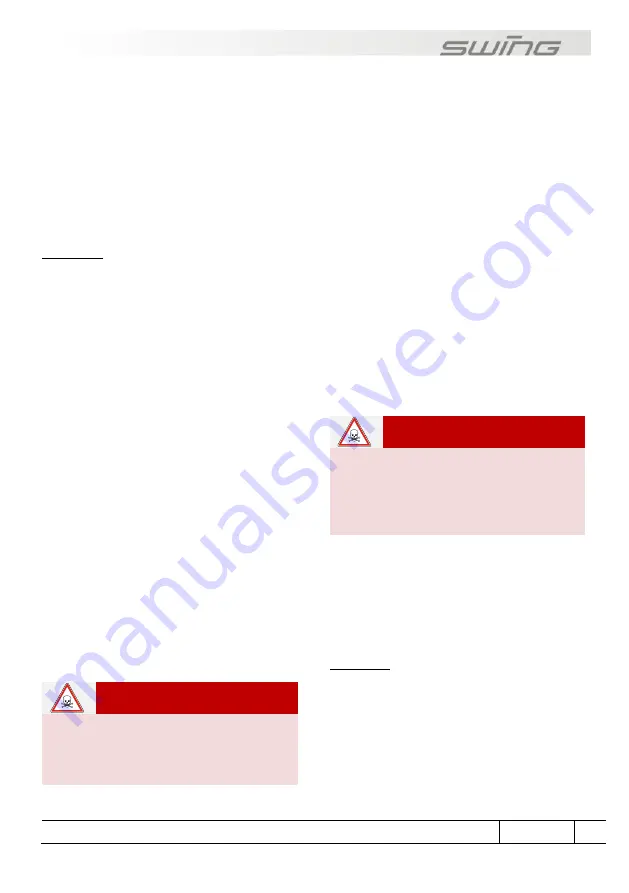
Dangerous situations and extreme flying
Section 7
29
Collapsing the paraglider
Asymmetric collapse
Asymmetric collapses are caused by the
stagnation point moving to the trailing edge
of the glider. A negative angle of attack
makes part of the canopy collapse and tuck
under, and the glider may plunge down, turn
away or spin.
Recovery
Should an asymmetric collapse occur,
counter-brake slightly on the side of the
glider that is still inflated to stop it turning
away and to stabilise it, until the glider flies
straight ahead again. With large asymmetric
collapses, it is important to counter-steer
carefully so that the glider does not stall
completely and go into a full stall. After an
asymmetric collapse, first control the
direction and fly away from the slope.
If you are not able to stop the glider turning,
without causing the inflated side to stall,
allow the glider to turn slightly while you
open the collapse.
Counter-steering and weight-shifting are
generally enough to re-inflate the collapsed
part of the glider.
If the collapsed part does not open
automatically or does not open completely,
reinflation can be assisted by applying light
brake pressure on the collapsed side (but
not hectic “pumping”) while counter-steering
on the opposite side. Make use of the full
braking distance, but be careful not to stall
the glider on one side.
WARNING
Counter-steering too strongly on the
inflated side of the glider can result in a
stall and to further uncontrolled flight
manoeuvres (cascade of events).
Asymmetric collapse with tangling
Following a very large collapse, the wing-tip
of the collapsed side may become trapped
in the glider lines. Here too counter-braking
and weight-shifting must be used to stop the
glider from turning away. The trapped end
can generally be opened by a short, fast pull
on the brake lines.
If this does not release the trapped side, pull
the red stabilo line as far as possible. This
will often correct a tangle. More serious
tangles require more pull on the stabilo line.
Always pay attention to your use of the
brakes when doing this and do not allow the
glider to stall on the open side.
If the tangle has not come free after several
attempts, you still have the option to open it
like a deep stall or a full stall. These flight
manoeuvres always require adequate
altitude and a high level of pilot skill.
WARNING
Deploy your reserve if the corrective
manoeuvres described in the following
sections do not return the glider to a
controllable flying position or if there is
not enough altitude for correction.
Front stall
A negative angle of attack can also cause
part or all of the leading edge of the glider to
collapse.
Recovery
The Core 3 will normally recover
automatically from a front stall, but re-
inflation can be assisted by rapid, light
symmetrical brake input on both sides. This
also prevents the wing tips moving forwards
during the front stall. In the case of extreme
front stalls across the entire wing chord, the
wing tips may move forward. Stop the glider













































